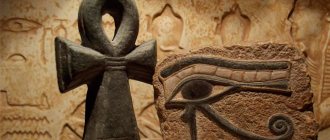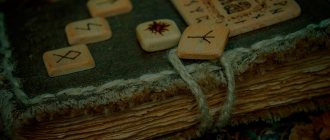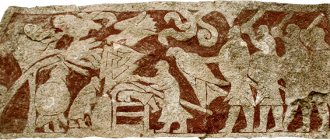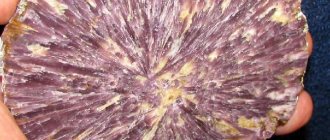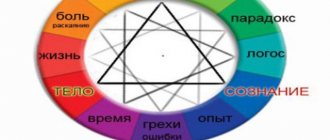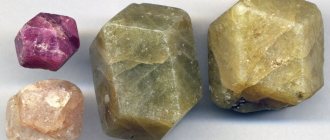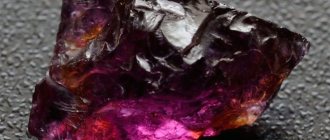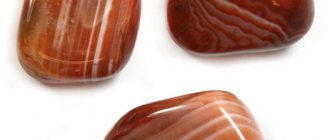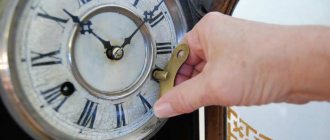Solar signs
Solar signs, in their overwhelming majority, are a cross with curved ends with equal sides, which are directed either clockwise or straight ahead. Almost always this sign circles a circle, or it is depicted against the background of a circle. The circle, in this case, means nothing more than the Universe, in which the process of endless movement continuously flows. During archaeological excavations, solar signs were most often found on all kinds of architectural details (they were used as amulets to protect homes), on weapons (it was believed that these signs gave strength), and on various household utensils. In ornaments, this sign is found everywhere as a symbol of the sun, light and life. The oldest solar signs found date back to approximately the 10th-15th millennium BC. The largest territory for the distribution and use of various solar signs, according to archaeological excavations, was Russia. In Rus' it was both a cultural and religious symbol.
Neither India, nor Europe, nor any other country can even come close to comparing with Russia in the number of different types of Kolovrat that decorated the national costumes, banners, weapons, temples, household items and houses of the Slavs. Almost all Slavic settlements and settlements had the shape of solar signs and were precisely oriented to the four cardinal directions. Calendar signs (Kolyada dar) were also designated by nothing more than solar signs. Kolovrat was the most important and almost unique of its kind among the elements of Slavic ornaments. There were about 144 varieties of this sign; in ancient times, none of the signs were simply applied to anything. All symbols had either amulet (security) or cult (sacral) meaning.
Almost absolutely all the amulets of the ancient Slavs had solar signs. None of our ancestors were ashamed of this sign; rather, on the contrary, the Kolovrat was the most important cult symbol in many religious beliefs. So in Buddhism and ancient Indian philosophy, the Kolovrat symbolizes the cycle of the Universe, in Tibet the Kolovrat is a protective (protective) symbol and a symbol of happiness, and in India, even more so, the swastika was depicted everywhere.
Kolovrat has always decorated residential buildings, robes of clergy, temples and sacred objects. For example, in the image of Christ Pantocrator-Pantocrator, the left and right swastikas are placed on the chest as symbols of the beginning and end of all things. In the St. Sophia Cathedral in Kyiv (the oldest surviving Christian church), on the saint's rank, belts are depicted, consisting of alternating swastikas and straight crosses. The headdress on the icon of “Our Lady of Sovereign” depicts a swastika made of gold.
At the beginning of the 20th century, solar signs were the most common amulet signs in Russia. It was believed that the swastika is a talisman that attracts good luck. In Rus', from time immemorial, it was believed that if you draw a swastika on your palm, you will certainly be lucky. The swastika was depicted on the walls of houses, in order for happiness to reign in them, it was placed on the ridge and carved on the platbands. An image of a Kolovrat was found on the walls of the Ipatiev House (where the family of Nicholas II was shot).
Simple peasants had their own names for swastikas. The swastika was called “feather grass” (the embodiment of the wind) in the Ryazan province, “hare” (a particle of sunlight) in Pechora, in some regions the equilateral cross was called “horse” or “horse shank” (horse head), because the horse was a symbol of the wind and sun. In honor of the sun, solar signs were also called “fire flints”. The ancient Slavs very correctly noticed the fiery, fiery nature of this symbol and its spiritual essence.
To this day, a lot of clothes embroidered with solar signs by our great-grandmothers have been preserved in the villages. Men's kosovorotki and women's sundresses, which are decorated with solar embroidery, are taken out of old chests on great holidays, and loaves decorated with Kolovtrat, Svarog and Posolon are baked on these days.
As mentioned a little above, Slavic signs, until the second half of the 20th century, were practically the only pattern that existed in Slavic embroidery and everyday life. And a little later, Slavophobes and other enemies of the Russian people tried in every possible way to eradicate solar symbols, traditions, our faith, and the great Russian people themselves. To this day, in our anti-Russian government, many “figures” (the offspring of the enemies of the Russian people who carried out a coup in 1917) are trying to ban equilateral rotating crosses.
According to academician B.A. Rybakov, Kolovrat is “a link between the Paleolithic, where it first appeared, and modern ethnography, which provides countless examples of swastika patterns in fabrics, embroidery and weaving.”
So let Kolovrat remain this connecting link between modern Russians and their ancestors and ignite in the hearts of descendants, rebellious and proud Russians, the same fire that was in the hearts of our glorious ancestors.
KOLOVRAT
The eight-rayed Kolovrat is a symbol of the revival of Slavic paganism. Although the sign is very ancient, it was put into active circulation by the famous pagan writer Dobroslav. You can see it on the banners of modern pagan communities. This honor was given to this sign not by chance. This is one of the signs of Svarog, the creator god, the god of wisdom. It was Svarog who created the Earth, people (through Dazhdbog), and gave people a lot of knowledge, including metal and the plow. The sign of Svarog is a sign of wisdom and supreme justice, a sign of Rule.
SVAROZHICH
Symbol of the Power of Svarog. Preserves in its original form all the diversity of life forms in the Universe. Protects intelligent forms of Life from spiritual and mental degradation. Also a sign of scientists who are no strangers to military skill. Protects researchers, seekers, healers, every person in whose Heart the love and knowledge of all that exists burns with the unquenchable Svarozhich Fire.
PERUNOV COLOR
A fiery symbol of the purity of the Spirit, it has powerful healing powers. Capable of discovering treasures hidden in the Earth and making wishes come true. Gives a person the opportunity to reveal Spiritual Powers and find genuine riches in his Soul. Associated with the holiday of Kupala and Perun.
ODOLENY-GRASS
Gives good, heroic health, cures diseases. This symbol is the main amulet against various ailments. It helps not only to cure the body of illness, but also gives an understanding of the causes of the disease, because, as we know, they are in our thoughts, words, and actions.
WARRIOR. PERUNITSA. VALKYRIE
Perunitsa among the Slavs, Valkyrie among the Scandinavians. An ancient amulet protecting Wisdom, Justice, Nobility and Honor. Revered by warriors - defenders of the Motherland, their Ancient Family and Faith.
THUNDER SIGN. THUNDER WHEEL
The thunder sign is the sign of Perun, enclosed in a circle with a six-pointed cross. This symbol was very widespread. The Scandinavians, Celts and Slavs knew him. We can see the thunder sign in the ornament of Russian spinning wheels and on huts right up to our time. They cut it to the bottom for a reason. On the huts it was carved on the kokoshnik (a board hanging from the end of the ridge) as a magical lightning rod. Also, the thunder sign is a sign of courage and military valor. Was one of the magical signs of the Russian squad. It can be found on helmets and armor plates. It is also embroidered on men's shirts.
SVAROGOV SQUARE
Svarogov Square symbolizes the fiery forge of Svarog, from which four flames burst out in different directions. Also, this symbol can represent the Alatyr stone, on which Svarog hit with his hammer, and from the sparks flying in all directions, new gods and ratichs - heavenly warriors - were born.
BRAND. SWASTIKA. YARGA. SALON
A cross with ends bent at right angles (less often an arc). Sign of Light, Sun, Life. Great cleansing and protective power. During archaeological excavations, solar signs were most often found on architectural details (protection), weapons (tradition of power), and household utensils. The largest territory for the use of solar signs as a religious, cultural and everyday symbol is Russia. Neither Europe nor India can compare with Russia in the abundance of Kolovrat covering Russian weapons, banners, national costume, houses, everyday objects and temples. Excavations of ancient mounds and settlements speak for themselves - many ancient Slavic settlements had the shape of solar signs oriented to the four cardinal directions.
Definition
Solar symbol
- This is a sign denoting the sun, personifying light and warmth. Also, these symbols personified the entire Universe, the galaxy. They also denoted eternal, life-giving, natural processes. And not in vain, the solar symbols of the Slavs were often used as amulets.
This is the heart of heaven, its center and its emblem. In Vedic symbolism, this concept is represented by the dwelling of the One Spirit, represented as the sun at the Zenith or Spiritual Sun during a time of perfect staticity. In the Far East, the symbol of the fertility and centrality of the Sun also became an imperial symbol, and an entire nation owed its name and emblem to the Sun. In fact, Sol Levante is not only the name of Japan, but also its symbol and its flag.
In the Buddhist tradition, the sun is the emblem of the Buddha, which in some Chinese texts is called the Sun-Buddha. The light of the illuminated, the reflection of his consciousness and overcoming human problems becomes a ray of sunlight. The color of wisdom, enlightenment and spirituality is yellow and, by extension, gold. A color dedicated to the deity throughout the world, which had good fortune in the Middle Ages, in the chromatic Gothic style, in which it was used to color the sky and altar background with the intention of representing a different, hierarchical space outside of time.
Terminology
There are a great many of them. The ancient Slavs called them yargic (after all, the word “solar” came from the Latin language). You can also hear another name - swastika, swastika signs. The ancient Slavs didn’t say that either. The root of the word “swastika” means “associated with good”, when translated from Indo-European.
Even in the golden masks adopted by the priests in sacrificial rites, the masculinity of the sun was obvious, and gender discrepancy also remained in the choice of sacrifices, only humans were offered the sun, only women on the moon. In Mexico, the sun was associated with cycles of time, and each of them is represented by an animal currently living on the fifth sun, which is represented by the butterfly.
For example, in Slavic mythology the Sun is called Svarog and is represented as a winged dragon or fiery snake that placed order in the cosmos, creating three kingdoms. For Azek there was also the Black Sun, the antithesis of the midday sun and was represented by the Mayans as a jaguar.
In general, the swastika can symbolize movement. If it moves clockwise, it represents the path to life, to well-being, as well as masculinity. And if it moves counterclockwise, it represents death, the slowdown of all processes.
Solar symbols of the Slavs and Aryans could be found absolutely everywhere, in any territory.
Many other representations of the sun as an animal or flower, such as the lion, deer, lotus, sunflower or chrysanthemum. Among the Celts, the sun was considered one of the fundamental elements of the Universe, and one of its symbols was called the Sun of St. Michael, which is on the Burkethert slab at Tullel and articulated and preciously interpreted.
The design features two seamlessly twisted lines framed by the sun positioned at the center, which acts as protection against malignancy and the source of life. It was commonly used as a symbol of the union between the heart and mind. Also in the Qur'an there is a reference to the Sun, meaning both the desire of people to come out of the darkness of their ignorance and move towards a new civilization, as the presence of God in people who constantly shine. In this context, interesting research is happening that also involves studying the influence of numbers.
Image
Most often, Slavic solar symbols resemble in shape either a circle or a cross (rotating - swastika). The cross symbolizes the four cardinal directions, and the circle symbolizes the solar disk.
The main solar symbols of the sun are similar to each other, but have different names. For example, Kolovrat is a swastika moving clockwise. Symbolizes the god Yarilo. Its color plays a big role: red – rebirth, blue – renewal, black – change. But England is a swastika moving counterclockwise.
The theme of cosmic geometry and solar irradiation is a theme close to the Pythagoreans, who place number and geometry at the center of their faith. In 700, William Blake interpreted and synthesized these concepts with a famous image called The Ancient of Days, which depicts the divine sun measuring the earth with a compass.
The original symbol of the circle is also the basic design of the mandala, an interesting congruence for interpreting the archetypal image that everyone has in their unconscious baggage. Sunshine often appears in a mandala, in a clearer form for children, both as a motif and associated symbols such as colors and shapes.
The swastika and other solar signs can have a different number of rays: two, three, four, five, six, eight and more. This also has its own deep meaning. Maybe our ancestors left them to us so that we could solve some kind of mystery?
Purpose and meaning
Solar symbols also served as a means of transmitting information for the ancient Slavs. For example, between mother and child, ancestors and descendants.
When we encounter the sun in a mandala, it is often associated with creative action and expression of the self, the vitality and courage of each individual to achieve personal goals. It expresses the ability to renew. Jeanne Chevalier - Alain Geberbrandt, Dictionary of Symbols.
Mircea Eliade, sacred and secular. In order to make new members of the newsletter and meet with students of the Mantite course, we are repeating a topic already discussed by Masada and holding a conference at the Archeology Association: "Runes". The ancient legends tell wonderful things. From famous warriors, huge companies, celebrations and joy, tears and tears. Fights of brave warriors; You will tell miracles about what you hear.
Why were the “solar” signs so important for the Slavs? It’s just that the Sun gods were the most important in the world of Pravi (Higher World). After all, the sun is the source of life on earth, the source of light and heat.
LiveInternetLiveInternet
Quote from SneznyBars message
Read in full In your quotation book or community!
Solar symbolism
Solar symbolism is the symbolism of the solar element, the Sun, the solar light gods.
The Sun Gods in Slavic Paganism are Dazhdbog, Svarog, Khors. They are one of the light ones, that is, representing the forces of the Rule of the Gods. Prav is the upper, heavenly world in Slavic mythology. The Slavs imagined Prav as an ideal world where the laws of justice and honor prevail. Many Russian words tell us about this: correct (as in Prav), spravny (with Prav), rule (in fairness), right (in both meanings). Solar symbolism is one of the brightest in the Slavic tradition. Among the solar signs, perhaps, there is not a single one that brings harm. On the contrary, all signs are associated with the acquisition of both material and spiritual benefits, their increase. The sun in Paganism is also the all-seeing eye, which is why, if there was a need, they committed a crime at night - perhaps the gods of the Rule would not notice; That’s why evil spirits and dark wizards are activated at night. In the sunny time of day, on the contrary, light forces predominate, helping man and nature. However, this is only one side of the coin.
About the swastika
Perhaps the fundamental sign for solar symbolism. The most short-sighted and uneducated, whose minds are burdened with stupid propaganda cries of the media, consider this sign to be an invariable attribute of fascism, so fashionable skinheads today. This is wrong. Any historian or philosopher, and even more so a pagan, will trace the history of this sign from the depths of many millennia. For the first time this symbol, along with some other symbols of German paganism, was appropriated for his fascist power by Adolf Hitler. Since then, it has become the custom, like fascism, like the swastika, in honor of the great (and terrible) Hitler. In fact, this sign has nothing to do with the ugliness called fascism. This sign is an image of the Sun, an appeal to the light gods. This sign brings goodness and justice to the world of Reveal, and carries within itself a huge charge of light magical energy. The classical Sanskrit name for this symbol comes from the Indo-European root “su/swa”, meaning “associated with good”. Let us remember the bird Mother Sva (the patroness of Rus'), the god Svarog, Svarga - the habitat of the light gods of Slavic myths. The word “light” refers to the same root. However, the Slavs called the swastika Kolovrat or Solstice. However, Kolovrat still starts with 6 rays. Since Kolo is a circle, RING, WHEEL, WELL, KOLOBOK. Kolovrat has been a symbol of the Sun in all centuries and among all peoples; there is even reason to believe that the Sun in ancient times was called “Kolo”. Also, some authors associate it with the unity of statics and dynamics. Moreover, only the rotating swastika has a dynamic meaning. If it rotates clockwise (to the right), it symbolizes the desire for everything connected with life, with positive qualities and an active masculine principle; counterclockwise rotation, on the contrary, indicates dying, the denial of everything positive and passivity of behavior. The Greeks interpret the direction of rotation of their swastika absolutely differently (who called it “tetraxele” - “four-legged”, “four-pointed”), since they learned about the swastika from the Slavic peoples who were not friendly to them and decided that what is Rule for the Slavs is Hades for them. Hence there is a lot of confusion with the direction of rotation and the direction of the rays of swastikas. The swastika is not only a four-ray sign, which was described above. There are also swastikas with 2, 3, 5, 6, 7, 8 or more rays. Each type of swastika has its own specific magical meaning. Let's look at some other types of swastikas.
Swastikas
The thunder sign is the sign of Perun, enclosed in a circle with a six-pointed cross. This sign was very widespread and was known to the Scandinavians, Celts and Slavs. We can see the thunder sign in the ornament of Russian spinning wheels and on huts right up to our time. They cut it to the bottom for a reason. On the huts it was carved on the kokoshnik (a board hanging from the end of the ridge) as a magical lightning rod. Also, the thunder sign is a sign of courage and military valor. It was a magical sign of the Russian squad. This sign can be found on helmets and armor plates. This sign is also embroidered on a man's shirt.
thunder sign
The eight-rayed Kolovrat is the sign under which the revival of Slavic paganism is now taking place. You can see it on the banners of modern pagan communities. This honor was given to this sign not by chance. This is the sign of Svarog, the creator god, the god of wisdom. It was Svarog who created the Earth, people (through Dazhdbog), and gave people a lot of knowledge, including metal and the plow. The sign of Svarog is a sign of wisdom and supreme justice, a sign of Rule. Also, the colo of Svarog is a symbol of the universe. The structure of the universal wheel of Svarog is very complex. Its center is located on Stozhar-Stlyazi - the celestial axis. It revolves around Stozhar in one day and makes a revolution in a year. The slowest rotation of the Wheel leads to a change in zodiacal eras. This rotation of the Wheel lasts 27 thousand years. This time is called the Svarog day.
Kolovrat
Trixel - Three-branched swastika. In the north, a “broken” trixel is used, that is, a trixel that has no connections between the rays. Its magical meaning is not very well known. But if we proceed from the fact that it consists of three runes of the Elder Futhark “Laguz” (“Laguz”), then it turns out that this is a sign of “that which leads,” a sign directing the development of events in the right direction. One can also compare it with the three runes “Kano”, a very complex rune associated with the direction and orientation of human activity. Simply put, this sign guides a person in life and serves as a kind of “guiding star” for him. Also, some scientists associate this sign with time and the god of time, among the Slavs - with Chislobog, and the three rays of the trixel - with three legs bent at the knees (running), however, this definition is very superficial: it is based only on the Greek interpretation of the name of the sign: tri – three, kselos – bone, limb. Following Greek terminology, the four-rayed swastika is called a “tetraxel”.
trixel
So, the main forms of solar symbolism, the swastika, are considered. However, there are also many other solar symbols that are less characteristic of the Slavic peoples, for example, the “Eye of the Dragon” - a three-rayed swastika with connected rays, used in Wales (Great Britain) in earth magic, the so-called “Celtic version” - a swastika with wavy curved rays , inscribed in a circle, Sonnenrad (by the way, it was the emblem of some SS divisions), the “cross of dedication” and many others...
Cross
Also a solar symbol. We do not classify it as a swastika very conditionally - the cross is also a swastika, only without the rays extending to the side. Many not very distant people consider it a “purely Christian” sign, but this is far from the case. For example, Catholic missionaries preaching in China saw crosses depicted on statues of Buddha, whose teachings arose about six centuries earlier than Christianity, and the Spanish conquistadors witnessed the veneration of the cross by pagan North American Indians as a fusion of Heavenly fire and Earthly fire. The word "cross" comes from the common European root "cru", which means "crooked". We can observe this root in the words “circle”, “crooked”, “steep”. In Latin "crux" means cross. There is also a version that the word “cross” comes from the Slavic root “kres” - fire (compare: “crosshair” - a tool for starting a fire). Archaeological evidence suggests that the cross as a symbol was revered in the Upper Paleolithic. The cross is a symbol of life, heaven and eternity. Also, the correct (equal) cross symbolizes the principle of connection and interaction of two principles: feminine (horizontal line) and masculine (vertical). Crosses are also divided into straight crosses, that is, having horizontal and vertical features, and oblique crosses, which have two diagonal features, with the straight cross personifying the male aggressive creative principle, and the oblique cross representing a softer creative principle. A straight cross can also serve as a primitive model of the World Tree, where the vertical line is the World Tree, and the horizontal line is the world of reality. Accordingly, a cross with a horizontal line shifted upward will indicate the location of the world of Rule on the Tree, and downwards - the world of Navi. Naturally, these crosses will have a corresponding magical meaning. Let's consider the main types of crosses characteristic of the Nordic tradition.
Crosses
The Celtic cross or Kolokryz most accurately demonstrates the similarity of the cross with the swastika and the entire convention of their separation. Look at the six- and eight-rayed rotors presented in this work. Nothing changes except the number of rays for these signs. Despite the fact that this cross is called Celtic, it is known to almost all Indo-Europeans, including the Slavs. The history of the Celtic cross goes back at least 8-9 thousand years. The Celts especially revered this cross. The Celtic cross was also called the “warrior’s cross”, “Wotan’s cross” (Odin). The twelve-pointed cross is a cross with a crossbar on each ray, or a swastika with rays extended to the left (for the dark one, to the right). The purpose of this cross is protection from external influences. Also, many researchers talk about this sign as a magical sign of the Family. It is also called the Helm of Terror, representing it as a combination of the four Algiz Elder Futhark runes. The Algiz rune is a rune of passive protection, that is, the meaning of this symbol is unchanged. This symbol was widespread both in ancient times, there is archaeological evidence of this - many amulets with a helmet of horror were found in the territories of the Scythians, Mordovians, Indo-European peoples, and in the Middle Ages they decorated the walls of houses and wooden products, and they were often used in church utensils. The most powerful symbol among the helmets of horror is the so-called Aegisjalm (Scandinavian name) or the Cross of Invincibility - this symbol surpasses all others in its effectiveness.
kolokryzh
12-pointed cross
Added to © “Alphabetical Index”

